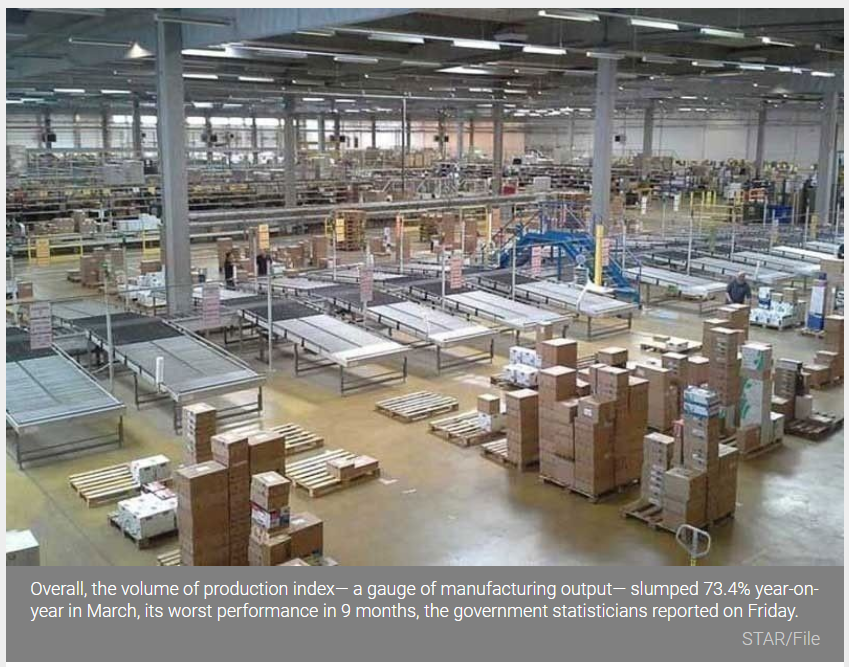Philippines: Factories add gloom to Q1 economy with worst slump in 9 months
MANILA, Philippines — Factories continued to pull back from producing goods in March, with their declining trend turning for the worst, a grim milestone that provides evidence the economy failed to mount a compelling rebound in the first quarter.
The report was not so bad as it seems though as more transport and electrical equipment, as well as papers and chemicals were churned out by factories. The problem is growth in these segments were not enough to offset much lower output of fuel, tobacco and textiles.
Even production of basic medicines is decreasing, a reflection of supply constraints on the ground while hospitals try to treat a growing number of coronavirus patients during the recent surge. The consequences of this drop, now on its third straight month, can severely affect the country’s already overwhelmed pandemic response.
Overall, the volume of production index— a gauge of manufacturing output— slumped 73.4% year-on-year in March, its worst performance in 9 months, the government statisticians reported on Friday.
While a lackluster manufacturing sector is nothing new, and something expected due to tepid consumer demand that typically drives factories to augment operations, the pace by which manufacturers are cutting down in making goods is again on an accelerating trend, a grim indicator of the lasting adverse effects a year into the health crisis.
On the ground, factories are cutting back on workers and working hours to save costs. Only about a fifth of factories surveyed operated in full capacity, while 27.3% were not even running at half of that. On average, factories were running at 61% capacity from 60.4% and the return of enhanced community quarantine and its modified version, the strictest quarantine regime there is, in Metro Manila and nearby urban areas does not invite confidence anything was better in April.
In fact, an advance reading by IHS Markit, a British information provider, puts the purchasing managers’ index that also gauges manufacturing at 49 last month, below 50 that separates contraction from growth.
Data showed production of petroleum products slid a whopping 97.4% year-on-year, while that of tobacco slid 44.5%. Large machineries and equipment, an indicator of construction activity that relies on state infrastructure spending, contracted 37.7%. Pharmaceutical products also dipped over a quarter from year-ago levels.
On the flip side, other potential construction components have increased output considerably. Fabricated metal products jumped 85.8% on-year, while electrical equipment went up 35.3% in terms of volume. Rubber and plastic as well as paper products rose 36.7% and 32.5% from March 2020, respectively.
The manufacturing report was released at the same time as that of trade data. Data would show a diversified situation between the two: while manufacturers generally hesitated to put out more goods out there, exporters which rely on them had shipped the greatest number of goods in any month on record in terms of value.
Emilio Neri Jr., lead economist at Bank of the Philippine Islands, said the answer to this would lie on the type of goods produced for abroad and for local consumption.
For instance, semiconductors that drive exports are closely related to electrical output that similarly posted a strong performance in March. Meanwhile, the shutdown of car plants, announced earlier but proceeding slowly, are beginning to hurt the manufacturing sector.
Rising pork costs stemming from depleted supplies may also help explain the factory weakness. “Lack of raw materials for food processing (e.g. pork, vegetables) in late 2020 and early 2021 (is also a factor),” Neri said in an email.
Source: https://www.philstar.com/business/2021/05/07/2096547/factories-add-gloom-q1-economy-worst-slump-9-months


 Thailand
Thailand




